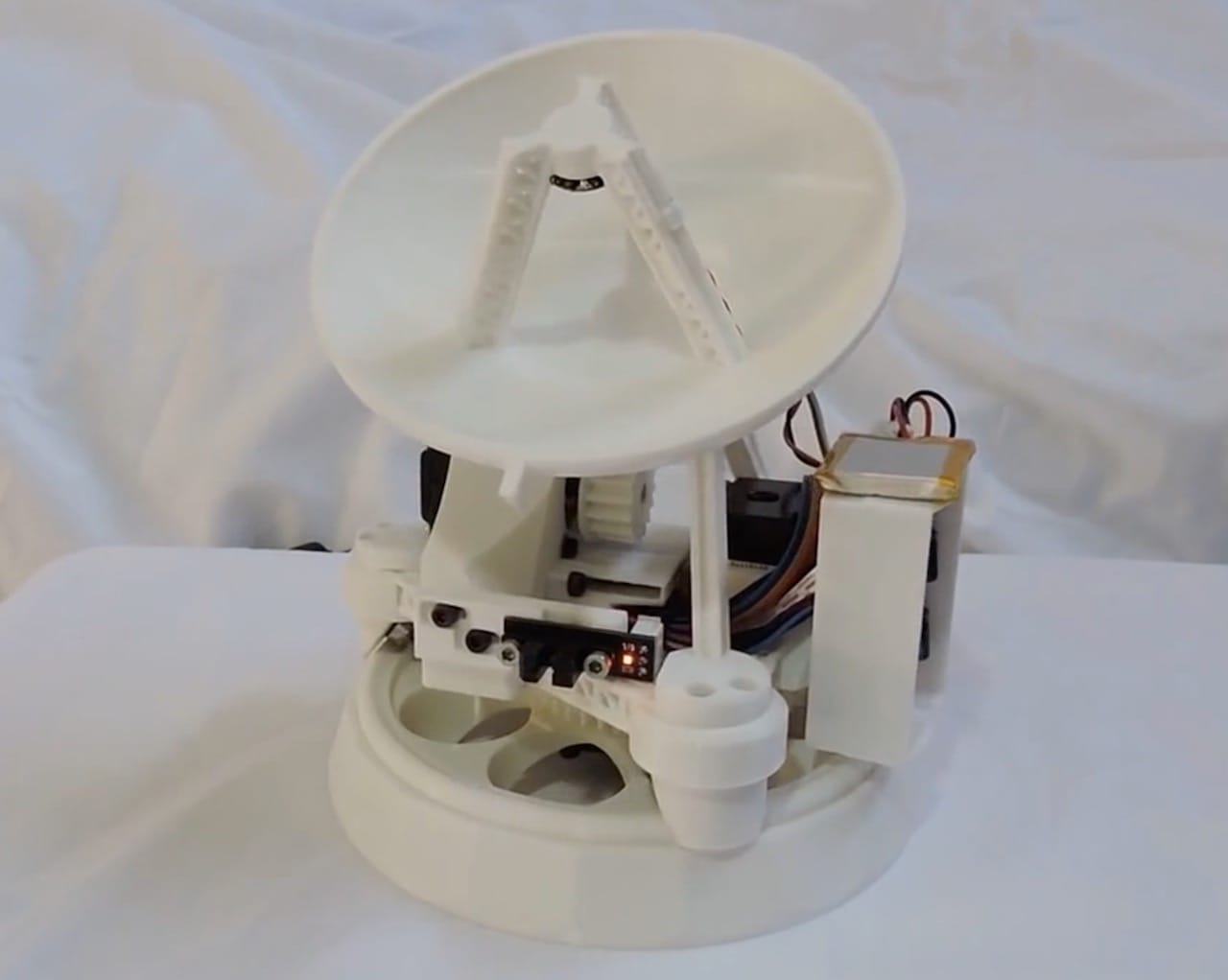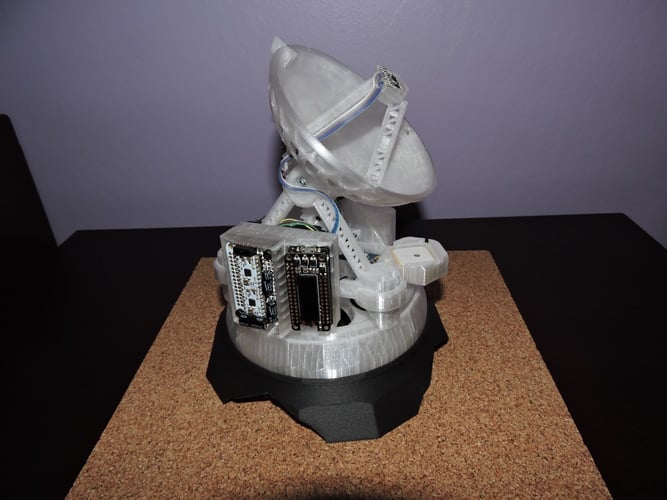
This week’s selection is the animated Desktop Satellite Antenna model by Hyperplane Interactive.
This item appears to be a satellite dish, and it actually is, at least in terms of motion. The 3D printed components are assembled and combined with hardware, electronics and software to create a device that quite literally can roughly track celestial objects.
The design includes a GPS receiver to assist in configuring the dish, as well as an Arduino controller. Fortunately, the software is also provided to drive the satellite dish; you wouldn’t want to be writing that yourself.
It also includes a WiFi controller so you can operate it wirelessly.
One very interesting design feature is that is uses wireless power to enable a complete range of movement by the dish without the possibility of tangling wiring. You can also detach the main dish as well without need for physical disconnection. However, as they explain:
This enables continuous rotation on the horizontal azimuth track, but also introduces a challenge faced by many space robots: The inductive charging set will not deliver enough power to continuously run the motors and other modules, so we’ll need to selectively power off modules and charge a battery until we have enough energy to perform a particular operation.
One thing to note is that to have this item truly track precise objects in the sky you will need to perform calibration similar to that practiced by backyard astronomers: leveling, alignment and so forth. However, the onboard GPS will assist for some aspects of setup.
The 3D model files and full instructions are available on Pinshape, but there is a small cost to download: USD$14. That’s a very decent price for what could be an incredibly interesting project.

Hyperplane Interactive also offers an expansion kit at no charge that includes a strap on base to accommodate a Raspberry Pi Zero for further automation and activities.
Does this actually function as a satellite receiver or radio telescope beyond the visual and mechanical effects? I’m not sure, but it would certainly be fun to try.
Via Pinshape and Hyperplane Interactive

